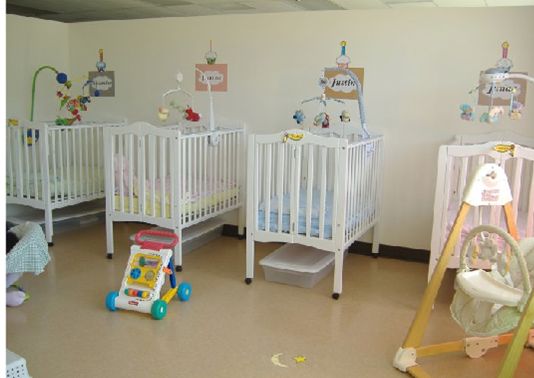Montessori philosophy extends to all aspects of a child’s environment, including their sleep space. A Montessori crib, also known as a floor bed or low bed, is designed to provide infants with a safe and nurturing sleep environment that promotes independence and autonomy from the earliest stages of life. In this article, we’ll explore the concept of the Montessori crib, its features, and its role in supporting healthy sleep habits and development in infants.
Understanding the Montessori Crib
A Montessori crib diverges from traditional cribs by offering a low-profile sleeping surface placed directly on the floor, without the use of a raised mattress or crib frame. Inspired by the Montessori philosophy of promoting freedom of movement and independence, the Montessori crib empowers infants to explore their sleeping environment and develop self-regulated sleep patterns from a young age.
Key Features of a Montessori Crib
- Low-Profile Design: Montessori cribs are characterized by their low-to-the-ground design, allowing infants to easily enter and exit the crib independently once they are mobile. This design promotes freedom of movement and encourages infants to explore their surroundings.
- Safety Considerations: While Montessori cribs lack the traditional bars or slats found in conventional cribs, they are designed with safety in mind. The absence of raised edges reduces the risk of falls, and soft padding or a thin mattress provides a comfortable sleeping surface for infants.
- Freedom of Movement: Unlike cribs with fixed boundaries, Montessori cribs offer infants the freedom to move in and out of their sleeping space as they please. This freedom encourages independence and allows infants to develop self-regulated sleep patterns from an early age.
- Natural Materials: Montessori cribs are often made from natural materials such as wood and cotton, creating a warm and inviting sleep environment for infants. These materials are chosen for their durability, safety, and eco-friendliness.
- Child-Centric Approach: The arrangement of a Montessori crib is centered around the needs and preferences of the infant. Soft bedding, comforting blankets, and familiar sleep cues create a cozy and nurturing sleep environment that promotes restful sleep and a sense of security.
Benefits of a Montessori Crib
- Promotes Independence: Montessori cribs empower infants to take an active role in their sleep routine by allowing them to enter and exit their sleeping space independently. This promotes a sense of autonomy and self-sufficiency from a young age.
- Supports Healthy Sleep Habits: The freedom to move in and out of the crib as needed allows infants to develop self-regulated sleep patterns and promotes restful sleep. Infants are encouraged to listen to their body’s cues and sleep according to their individual needs.
- Encourages Exploration: The low-profile design of a Montessori crib encourages infants to explore their surroundings and engage with their environment. This exploration fosters cognitive development and encourages curiosity and discovery.
- Strengthens Bonding: Montessori cribs offer opportunities for bonding between caregivers and infants during sleep routines. Caregivers can easily access and comfort the infant in their sleep space, promoting a sense of security and attachment.
- Transition-Friendly: As infants grow and develop, Montessori cribs can be easily transitioned into toddler beds by removing the side rails and adding a thicker mattress. This seamless transition supports continuity and familiarity in the sleep environment.
Conclusion
A Montessori crib offers infants a safe, nurturing, and independence-promoting sleep environment that aligns with the principles of Montessori philosophy. By providing infants with the freedom to explore their sleep space and develop self-regulated sleep patterns from a young age, Montessori cribs support healthy sleep habits and foster independence and autonomy. Whether used in a Montessori-inspired nursery or as part of a more traditional sleep environment, Montessori cribs play a vital role in promoting healthy development and well-being in infants.










